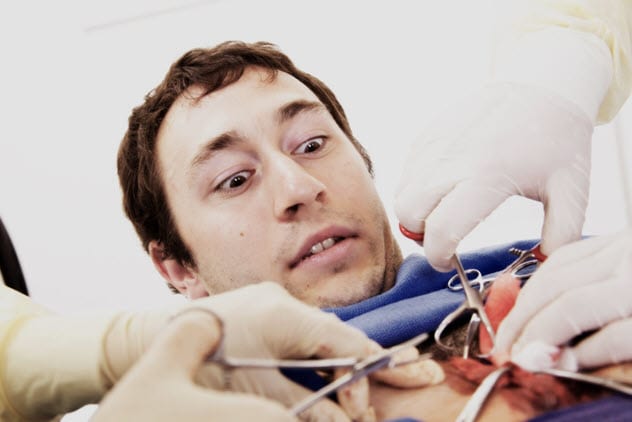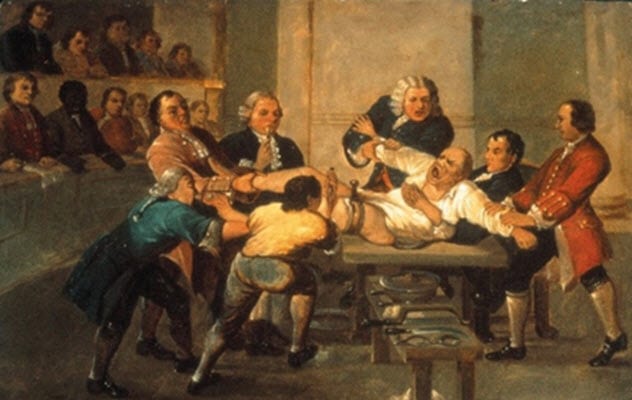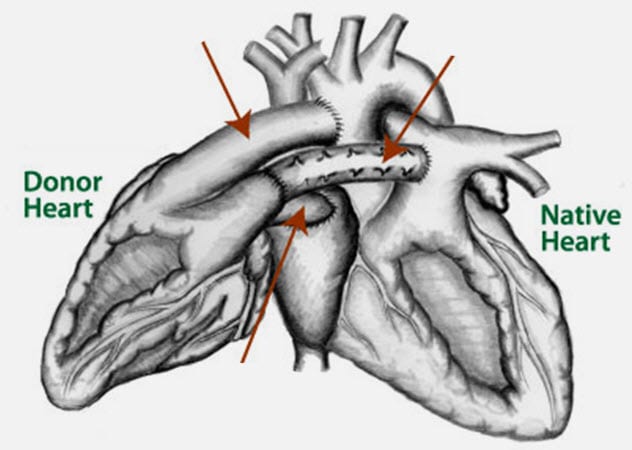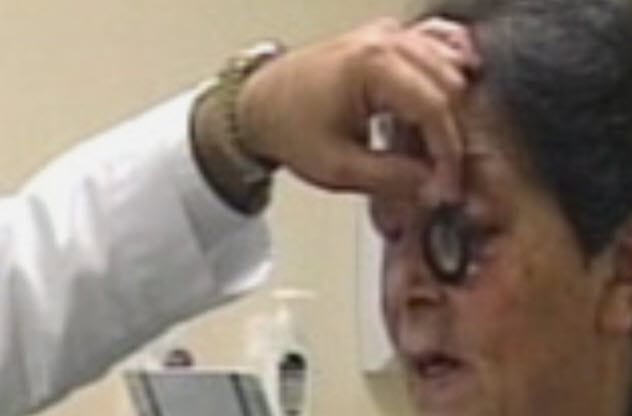 Politics
Politics  Politics
Politics  Weird Stuff
Weird Stuff 10 Freaky Times When Famous Body Parts Were Stolen
 Miscellaneous
Miscellaneous 10 Interesting Things Manufacturers Stopped Making and Why
 Gaming
Gaming 10 Funny Tutorials in Games
 History
History 10 Fascinating Little-Known Events in Mexican History
 Facts
Facts 10 Things You May Not Know about the Statue of Liberty
 Movies and TV
Movies and TV 10 Movie Adaptions That Brought Popular Songs to Life
 Health
Health 10 Miraculous Advances Toward Curing Incurable Diseases
 Miscellaneous
Miscellaneous 10 Undeniable Signs That People’s Views of Mushrooms Are Changing
 Animals
Animals 10 Strange Attempts to Smuggle Animals
 Politics
Politics 10 Countries Where Religion and Politics Are Inseparable
 Weird Stuff
Weird Stuff 10 Freaky Times When Famous Body Parts Were Stolen
 Miscellaneous
Miscellaneous 10 Interesting Things Manufacturers Stopped Making and Why
Who's Behind Listverse?

Jamie Frater
Head Editor
Jamie founded Listverse due to an insatiable desire to share fascinating, obscure, and bizarre facts. He has been a guest speaker on numerous national radio and television stations and is a five time published author.
More About Us Gaming
Gaming 10 Funny Tutorials in Games
 History
History 10 Fascinating Little-Known Events in Mexican History
 Facts
Facts 10 Things You May Not Know about the Statue of Liberty
 Movies and TV
Movies and TV 10 Movie Adaptions That Brought Popular Songs to Life
 Health
Health 10 Miraculous Advances Toward Curing Incurable Diseases
 Miscellaneous
Miscellaneous 10 Undeniable Signs That People’s Views of Mushrooms Are Changing
 Animals
Animals 10 Strange Attempts to Smuggle Animals
10 Fascinating Facts About Surgery
Even if most surgical techniques of today are rather recent developments, people have been cutting each other up in the hopes of fixing various diseases for a long time now. Surgery has a long history and shows up in historical records from various regions of the world. However, early humans did it more to see what was inside the body than because they knew how to fix certain diseases.
On the other hand, modern surgery is a marvel of medical science. We now use it to do things like organ transplants and plastic surgery that we didn’t even know were possible until very recently. That doesn’t mean that we have it all figured out, though, as the field of surgery still has many unresolved mysteries and interesting facts that most people don’t know about.
10 A Surprisingly High Number Of Patients Wake Up During Surgery

If you ever talk to a surgeon about undergoing a surgical procedure, he’ll go to great lengths to assure you that you won’t feel a thing. While that’s largely true as general anesthesia should take care of that, it hasn’t worked as intended quite a few times.
According to one study, about 1 in 1,000 patients wake up during surgery in the United States every year. Although most of those cases occur at the beginning or end of the operation, it happens quite a bit in the middle, too. Around half of all patients who wake up during surgery also end up developing PTSD and depression, which is quite understandable as it sounds like a horrific experience.
It’s made worse by the paralytics administered with anesthesia before the surgery as they render the patients unable to alert the surgeons. Pain may not be involved in all cases, though the mere act of seeing someone cutting you up and doing things inside your body is enough to mess with the brain for a long time.[1]
9 Anesthesia Was Initially Unpopular (And Outright Banned In Some Places)

It’s difficult to imagine, but surgeries were done without any type of anesthesia for the overwhelming majority of human history. Things like medicinal plants and alcohol were used, though a drink can hardly numb the pain of, say, someone cutting up your leg with an axe.
In light of that, you’d think that doctors would have jumped at the idea of anesthesia when it was first developed. As is the case with most of history, however, common sense isn’t how we used to do things back then.
Initially, anesthesia was an unpopular procedure in places around the world, especially in the US. While some surgeons cited the ridiculous “it doesn’t feel like surgery unless the patient can feel everything” excuse, others went with the old “satanic influence” card.[2]
There were some legit reasons, too, like the possibility of death due to overdose. Most surgeons back then didn’t know the proper amount of anesthesia to be administered.
8 The ‘Two-Hearts’ Surgery

We’ve grown up to believe that the maximum number of hearts that can possibly reside in a human body is one. It makes sense, too, as the heart is one of the most important organs of the body and is perfectly capable of performing its functions alone.
That’s not the case in some acute cases of late-stage heart failure in which the heart requires additional support to function. Medical researchers could have come up with an external setup—like dialysis—to help with it, but they figured that just sticking another heart in there would do the trick, too.[3]
Known as a heterotopic heart transplant, it involves taking a heart from a donor and putting it alongside the existing heart for assistance. While the procedure isn’t as widely used in the US anymore (as we have better techniques to do the same thing now), it’s still a possible surgical option if it’s needed.
7 Placebo Surgery

The placebo effect is one of the most fascinating aspects of medical science. While we currently have no idea about the extent to which it works, we know that it can be effective.
It has been successful even when the patients are told that they’re getting a placebo. Research suggests that the placebo is as effective with surgical procedures as with day-to-day ailments.[4]
Many studies have found that just telling patients that they went through a surgery, even if they didn’t, is enough to have the same effects as those experienced by patients who actually underwent an operation. It only works with certain surgical procedures like a knee arthroscopy as you’d still have to undergo a real surgery for more complicated conditions (like heart failure).
6 Human Head Transplant

When we talk about transplants, certain organs simply don’t seem to qualify for the procedure. The head is one of them as the ability to put someone’s head on another person is straight out of science fiction.
While it’d be dishonest to say that we already have that tech, it’s surprisingly close to being developed. Some researchers have already made huge strides in making it happen in recent times, and it may not be long before we’re finally able to do it.
The basic idea is exactly what you’d imagine: Just cut off a head from a donor, place it on someone’s torso, and hope it sticks. We were quite close to making it happen, but the first volunteer for the procedure recently backed out, which was probably a sensible decision on his part.[5]
5 Unborn Surgery

Being born seems to be one of the most basic qualifications for being able to get a surgery. Apart from the incredible difficulty of operating on an unborn baby, it sounds like something straight out of the future. That is, of course, if you don’t include the recent surgery done on a baby in the womb in the UK.
The baby was suffering from spina bifida—a birth condition wherein the spine and spinal cord aren’t properly formed in the womb. The mother had the option to either wait for the baby to be born and then fix the problem, get the doctors to operate in utero, or just terminate the baby (which most of us won’t go for).
She opted for the in utero surgery as the condition is much more difficult to cure once the baby is fully developed and born. In a four-hour operation, the surgeons sliced up the mother’s womb, operated on the baby’s spine, and put it all back together like nothing happened. The baby was born in April 2019 with no signs of the condition.[6]
4 Surgeons Leaving Instruments Inside Is Ridiculously Common

Even if it’s a staple of surgeon jokes around the world, you’d think that accidentally forgetting surgical instruments inside a patient during an operation isn’t that common. After all, surgeons are some of the most skilled and qualified medical professionals around.
If someone can open up a body, fix whatever’s wrong inside, and close it back up as a part of their daily job, it’s safe to assume that they have the presence of mind to not leave a pair of tweezers inside. Surprisingly, that’s not the case at all.
Across the globe, surgeons frequently leave a wide variety of objects inside their patients, including forceps, surgical masks, and needles. There are many reasons, such as more than one surgeon being involved in the operation or simply not keeping track of their surgical inventory.[7]
3 Using A Tooth As An Eye

As of now, we don’t have a surgical procedure to transplant the human eye. While some parts of the eye can be transplanted, replacing the whole eye with that of another person is still some way into the future.
What we do have, however, is a way to put a tooth into the eye to restore vision. It may sound like something straight out of a bad sci-fi horror movie, but the procedure—known as osteo-odonto-keratoprosthesis—has been around for a long time.
It involves making a hole in the tooth, placing a prosthetic lens in it, and putting the tooth into the eye to serve as the cornea. It does look a bit horrifying, though it has helped to restore vision for quite a few patients with damaged corneas. As the tooth is from the same body, there’s a minimal chance of the body rejecting the tissue and causing problems later.[8]
2 Growing A Jaw On The Back

When a 56-year-old German man lost a part of his lower jaw to cancer, he had two options: live the rest of his life without a jaw or go for an experimental technique developed by researchers at the University of Kiel. He went with the latter and became the first patient in history who had a jaw grown on his back.
They used the model of his head to create a titanium cage resembling his jaw, filled it with bone mineral blocks, and coated it with bone marrow. They also filled the cage with a protein to accelerate bone growth and implanted it under his right shoulder blade.
To everyone’s surprise, the jaw developed like a normal jaw for a few weeks. Then it was removed and grafted onto his face. He quickly redeveloped the ability to chew, though he still didn’t have any teeth. It was some time before it could be used like a normal jaw.[9]
1 We Still Don’t Know Why Anesthesia Works

Anesthesia has been one of the most important medical discoveries in our history. Before it, patients had to be completely conscious and in excruciating pain during surgery, which wasn’t fun for anyone involved. Due to anesthesia, operations are now much quieter affairs.
Even so, we still have little idea about why anesthesia works. The mechanisms of the brain that make us enter a deep state of unconsciousness under anesthesia—no matter what happens—are a complete mystery to scientists. In essence, a patient under general anesthesia could be understood to be in an artificial coma, though that’s about all we know about it.
That’s why anesthesiology is a whole science on its own and anesthesiologists are some of the most skilled and in-demand medical professionals around. Moreover, it ties into the larger mystery of consciousness itself.[10]
Understanding what anesthesia does to the brain would take us one step closer to answering one of the biggest questions of life: “What part of the brain makes us conscious and self-aware?”
You can check out Himanshu’s stuff at Cracked and Screen Rant, or get in touch with him for writing gigs.
Read more frightening facts about surgery on Top 10 Disastrous Mistakes Performed During Surgery and 10 People Who Performed Surgeries On Themselves And Survived.








